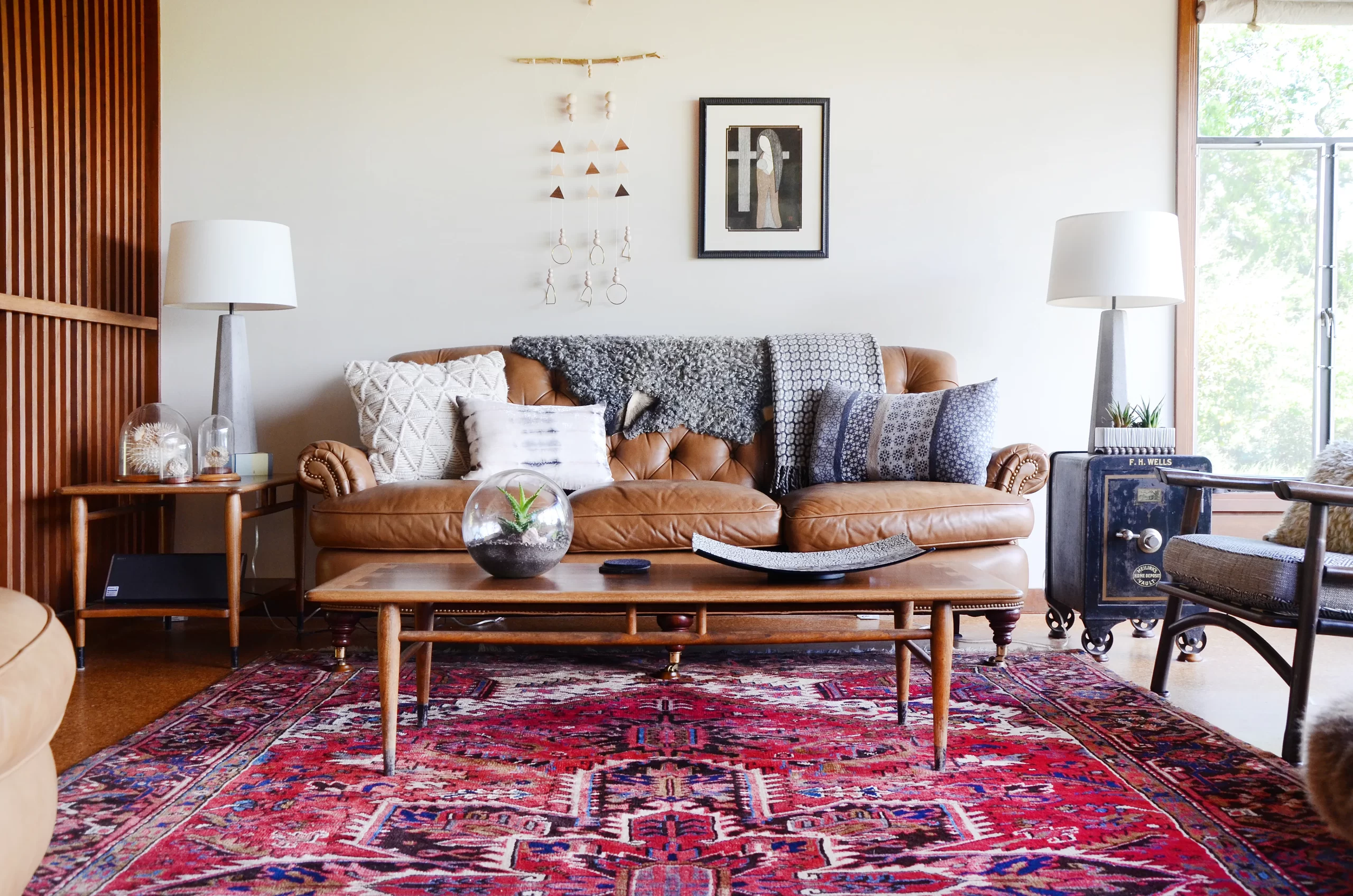If you’re currently on the hunt for vintage rugs both in your local area and online, then you’re probably starting to figure out just how difficult this type of rug shopping can be!
Not only do you want to match your home’s existing aesthetics and décor, but you’re more than likely also looking for a vintage design that’ll remain timeless for decades to come.
We understand just how tough vintage rug shopping can be, which is why we’ve created this comprehensive guide to help you better understand what you should be on the lookout for during this type of home décor search.
Check out the below sections to see what you should know and be on the lookout for while finding your next vintage rugs!
What Exactly Constitutes As “Vintage Rugs”?
It’s first and foremost important for rug shoppers to understand what technically makes certain area rugs vintage rugs, and this is partly because there’s a confusing difference between antique and vintage area rugs.
Vintage rugs refer to area rugs that are anywhere between 25-100 years old, and antique rugs refer to area rugs that are over 100 years old. Although some rug sellers will utilize these industry terms interchangeably, it’s important for rug shoppers to know these types of technicalities.
Vintage rugs are supposed to be significantly less expensive as compared to antique rugs, but there’s also no denying how high-quality vintage rugs often come at rather hefty prices as well. This is why rug shoppers need to be extra patient and diligent while searching for vintage area rugs both at in-person showrooms and online!
What To Look For While Shopping For Vintage Rugs
There are many shopping factors that people need to keep in mind while searching for vintage rugs, and below are some of the most important considerations oriented around quality, authenticity and price:
Authentic Vintage Rugs Have No Backings
One easy way to spot fake vintage rugs is when they have a backing that’s more representative of modern rug designs. Authentic vintage rugs never have a backing, and this is a big reason why you’ll see many online listings that show both the front and backsides of the for-sale rug.
Another factor to keep in mind is that authentic vintage rugs have symmetrical front and backside designs, which means that the rug should essentially look the exact same on the back as it does on the front.
Authentic Hand-Knotted, Vintage Rugs Have Sewn-In Fringes
Although this type of scam is often easy to spot when you’re shopping in-person at showrooms or area rug marketplaces, it’s sometimes more difficult to recognize while shopping online. It’s an unfortunate truth that the rug industry has many scammers in it, and one common scam is to sew on a rug’s fringe separately to make it appear more authentic.
Every authentic, hand-knotted vintage rug will have a fringe that comes directly out of its weave, which means that the fringe is an essential part of the rug’s construction!
Vintage Rugs Are Always Made From 100% Natural Materials
This usually means that vintage rugs will be made from natural materials like wool, cotton, silk, or combinations of these three materials.
This is an important distinction to make while shopping, because authentic vintage rugs are never made from manmade materials like plastics, polyester, or other common synthetic materials that have grown in popularity throughout recent years.
This is why rug shoppers should always ask about a for-sale rug’s materials!
You’re Looking For Hand-Knotted Rugs, Not Hand-Tufted Rugs
A new trend throughout the rug industry is to develop what’s known as hand-tufted rugs, which are made with devices called “tufting guns” that punch threads through fabric sheets and add layers of backing to ultimately hold a rug’s tufts together. Although hand-tufted rugs are very popular today due to their affordability, they’re never considered to be authentic vintage rugs.
Hand-knotted rugs are known for their traditional construction methods that date back thousands of years, and they’re also known for being incredibly durable. So if you’re already looking for a rug that’s at least 25 years old, then you’ll always be better off with a hand-knotted construction that’ll undoubtedly last a long time and ultimately be a long-term, décor investment!
A Vintage Rug’s KPI Rating Impacts Its Price & Quality
Every vintage area rug will come with a KPI rating, which stands for knots-per-inch. This rating is incredibly important when determining a rug’s overall quality, which inevitably will impact its price.
Most vintage rugs have KPI ratings between 50 and 400+, and the higher this rating, the more expensive the rug will ultimately be.
Natural Dyes & Hand-Spun Wool Will Increase A Vintage Rug’s Price
It’s also important for rug shoppers to pay very close attention to a vintage rug’s dyes, because they’re always supposed to come from natural sources.
Many vintage rugs are also made from wool, but the price of the rug can increase depending upon the wool’s overall quality as well.
Speak With The Rug Source Experts When You’re Searching For Vintage Rugs Online!
There’s a lot that rug shoppers need to consider when they’re on the hunt for authentic vintage rugs, and the above tips are a wonderful starting point for anyone searching both at in-person showrooms and online.
One of the top-rated online marketplaces for authentic vintage rugs is Rug Source, and you can check out their vast selection of vintage area rugs when you click on the link to their website that’s located at the beginning of this article!


 Using SQL for Bayesian Inference: Building Probabilistic Models with Data
Using SQL for Bayesian Inference: Building Probabilistic Models with Data  Why do people love the surprises in online slot games?
Why do people love the surprises in online slot games?  Can shockwave for ED help men with high cholesterol?
Can shockwave for ED help men with high cholesterol?  Feeding Sheep Through the Seasons: Changing diets for summer and winter
Feeding Sheep Through the Seasons: Changing diets for summer and winter  Role of CBD Vape Pens in Natural Pain Relief?
Role of CBD Vape Pens in Natural Pain Relief?  Simple Steps to Prevent Burnout Before It Takes a Toll
Simple Steps to Prevent Burnout Before It Takes a Toll  Why Low-Acid Organic Coffee is the Perfect Choice for Sensitive Stomachs?
Why Low-Acid Organic Coffee is the Perfect Choice for Sensitive Stomachs?  Which Ayurvedic Medicine is the Best Tablet for Piles?
Which Ayurvedic Medicine is the Best Tablet for Piles?  Discover the Latest Hits on Zee5: Must-Watch Movies and Series
Discover the Latest Hits on Zee5: Must-Watch Movies and Series 